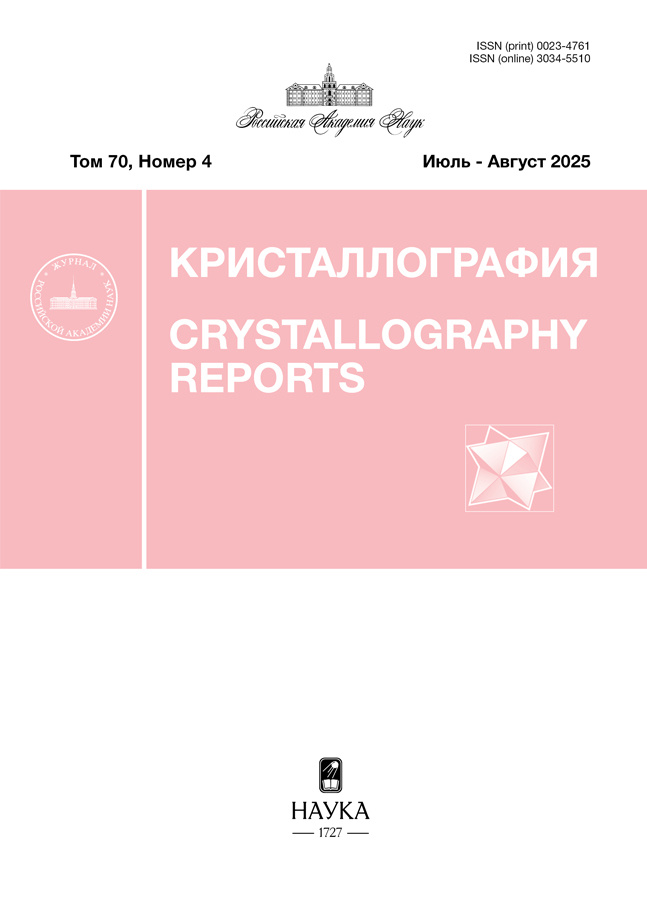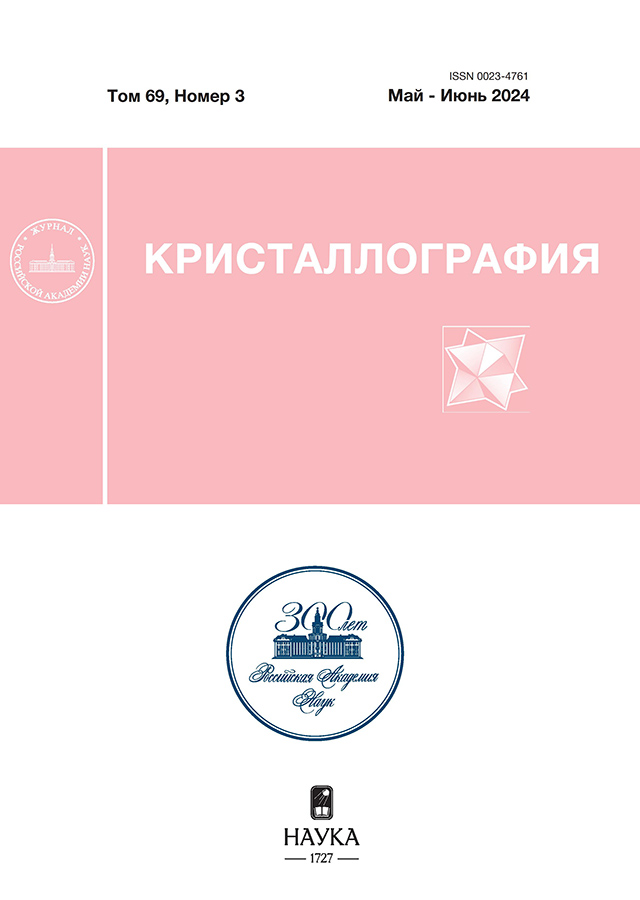Influence of copper powder structure on the catalytic properties of cerium oxide
- Authors: Zhigalina O.M.1, Morozova O.S.2, Khmelenin D.N.1, Cherkovskiy E.N.1, Firsova A.A.2, Basu V.G1, Vorobieva G.A.2
-
Affiliations:
- Shubnikov Institute of Crystallography of Kurchatov Complex of Crystallography and Photonics of NRC “Kurchatov Institute”
- N.N. Semenov Federal Research Center for Chemical Physics RAS
- Issue: Vol 69, No 3 (2024)
- Pages: 511-521
- Section: НАНОМАТЕРИАЛЫ, КЕРАМИКА
- URL: https://rjdentistry.com/0023-4761/article/view/673192
- DOI: https://doi.org/10.31857/S0023476124030173
- EDN: https://elibrary.ru/XNXCRP
- ID: 673192
Cite item
Abstract
The influence of the structure of copper powder particles on the catalytic activity of the CeO2/Cu catalyst was studied using the methods of X-Ray diffraction, electron microscopy, electron diffraction, energy dispersive X-Ray analysis, as well as programmed temperature reduction of CO (CO-TPR). Nanocomposites were obtained by mechanochemical synthesis using copper particles differing in size and morphology: micron-sized dendrites and nanoparticles. It was shown that the activity of the catalyst obtained from nanosized copper is two times higher, which is due to the presence of CuxO clusters located on the atomic steps of cerium oxide nanocrystals. This arrangement of clusters apparently ensures that the activating centers are not blocked. Thus, the surface structure of cerium oxide particles formed when using nanosized copper powder is a key factor responsible for the catalytic activity.
Full Text
About the authors
O. M. Zhigalina
Shubnikov Institute of Crystallography of Kurchatov Complex of Crystallography and Photonics of NRC “Kurchatov Institute”
Author for correspondence.
Email: zhigal@crys.ras.ru
Russian Federation, Moscow
O. S. Morozova
N.N. Semenov Federal Research Center for Chemical Physics RAS
Email: zhigal@crys.ras.ru
Russian Federation, 4, Kosygin st., 119991 Moscow
D. N. Khmelenin
Shubnikov Institute of Crystallography of Kurchatov Complex of Crystallography and Photonics of NRC “Kurchatov Institute”
Email: zhigal@crys.ras.ru
Russian Federation, Moscow
E. N. Cherkovskiy
Shubnikov Institute of Crystallography of Kurchatov Complex of Crystallography and Photonics of NRC “Kurchatov Institute”
Email: zhigal@crys.ras.ru
Russian Federation, Moscow
A. A. Firsova
N.N. Semenov Federal Research Center for Chemical Physics RAS
Email: zhigal@crys.ras.ru
Russian Federation, 4, Kosygin st., 119991 Moscow
V. G Basu
Shubnikov Institute of Crystallography of Kurchatov Complex of Crystallography and Photonics of NRC “Kurchatov Institute”
Email: zhigal@crys.ras.ru
Russian Federation, Moscow
G. A. Vorobieva
N.N. Semenov Federal Research Center for Chemical Physics RAS
Email: zhigal@crys.ras.ru
Russian Federation, 4, Kosygin st., 119991 Moscow
References
- Soria J., Conesa J.C., Martinez-Arias A., Coronado J.M. // Solid State Ionics. 1993. V. 65. P. 755. https://doi.org/10.1016/0167-2738(93)90191-5
- James T.E., Hemmingson S.L., Ito T., Campbell C.T. // J. Phys. Chem. 2015. V. 119. P. 17209. https://doi.org/10.1021/acs.jpcc.5b04621
- Lu J., Wang J., Zou Q. et al. // ACS Catal. 2019. V. 9. № 3. P. 2177. https://doi.org/10.1021/acscatal.8b04035
- Konsolakis M., Lykaki M. // Catalysts. 2021. V. 11. № 4. P. 452. https://doi.org/10.3390/catal11040452
- Varvoutis G., Lykaki M., Marnellos G.E., Konsolakis M. // Catalysts. 2023. V. 13. P. 275. https://doi.org/10.3390/catal13020275
- Фирсова А.А., Морозова О.С., Леонов А.В. и др. // Кинетика и катализ. 2014. Т. 55. № 6. С. 783. https://doi.org/10.7868/S0453881114060069
- Borchers Ch., Martin M.L., Vorobjeva G.A. et al. // J. Nanopart. Res. 2016. V. 18. P. 344. https://doi.org/10.1007/s11051-016-3640-6
- Морозова О.С., Фирсова А.А., Тюленин Ю.П. и др. // Кинетика и катализ. 2020. Т. 61. № 5. P. 741. https://doi.org/10.31857/S0453881120050081
- Zhigach A.N., Kuskov M.L., Leipunskii I.O. et al. // Bulletin of the Russian Academy of Sciences: Energetic. 2012. V. 3. P. 80.
- Shelekhov E.V., Sviridova T.A. // Met. Sci. Heat Treat. 2000. V. 42. P. 309. https://doi.org/10.1007/BF02471306
- Konsolakis M. // Appl. Catal. B: Enviromental. 2016. V. 198. P. 49. https://doi.org/10.1016/j.apcatb.2016.05.037
- Van Deelen T.W., Mejía C.H., De Jong K.P. // Nature Catal. 2019. V. 2. P. 955. https://doi.org/10.1038/s41929-019-0364-x
- Cipriano L.A., Di Liberto G., Pacchioni G. // ACS Catal. 2022. V. 12. № 19. P. 11682. https://doi.org/10.1021/acscatal.2c03020
- Gao Y., Zhang L., Van Hoof A.J.F., Hensen E.J.M. // Appl. Catal. A. General. 2020. V. 602. P. 117712. https://doi.org/10.1016/j.apcata.2020.117712
- Cruz A.R.M., Assaf E.M., Gomes J.M., Assaf J.M. // Catal. Today. 2021. V. 381. № 1. P. 42. https://doi.org/10.1016/j.cattod.2020.09.007
- Borchers Ch., Martin M.L., Vorobjeva G.A. et al. // AIP Adv. 2019. V. 9. P. 065115. https://doi.org/10.1063/1.5109067
- Paier J., Penschke C., Sauer J. // Chem. Rev. 2013. V. 113. P. 3949. https://doi.org/10.1021/cr3004949
- Chen A., Yu X., Zhou Y. et al. // Nature Catalysis. 2019. V. 2. P. 334. https://doi.org/10.1038/s41929-019-0226-6
- Puigdollers A.R., Schlexer P., Tosoni S., Pacchioni G. //ACS Catal. 2017. V. 7. P. 6493. https://doi.org/10.1021/acscatal.7b01913
- Kappis K., Papavasiliou J. // ChemCatChem. 2019. V. 11. № 19. P. 4765. https://doi.org/10.1002/cctc.201901108
- Martínez-Munuera J.C., Javier G.M., Yeste M.P. et al. // Appl. Surf. Sci. 2022. V. 575. P. 151717. https://doi.org/10.1016/j.apsusc.2021.151717
Supplementary files



















